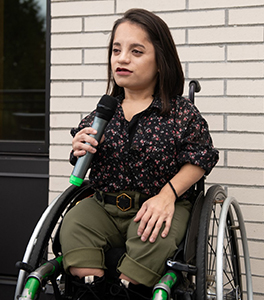 A big part of advocating is sharing your story. You're probably passionate about this issue because it impacts you, someone you know, or members of your community.
A big part of advocating is sharing your story. You're probably passionate about this issue because it impacts you, someone you know, or members of your community.
Being able to tell a compelling story – and link it to the bigger picture – is an important skill for all advocates.
It can be intimidating meeting with a politician or government official. Remember that you are the expert on your own story and living experience. Politicians need to know a lot about many different things, but that means they are not experts on most things. You are the expert on your story and the issue you are facing.

Every good story has a beginning, middle and end. Your story should include:
- The
challenge you faced.
- The
choice you made, and why.
- The
outcome and what you learned.
|
It is also important to remember that the story you share does not need to be your whole life story. Try to make sure that what you share is related to the issue you are advocating about.
Once you have an idea of the personal story you want to share, make sure you can connect this story to three things: community, urgency, and government priorities:
-
Community: How are others in your community facing the same challenges and making similar choices? What impact is that having?
-
Urgency: What will the future look like if action on your issue is not taken? What do we need to do to prevent this?
-
Government priorities: Think about the priorities of the government or political party that you are meeting with. How is your issue connected to these priorities? If you are not sure what their priorities are, you can look at:
- Promises they made in their election platform.
- Commitment they made in a speech (such as a victory speech or a throne speech).
- Issues they have been talking about in the news recently.
